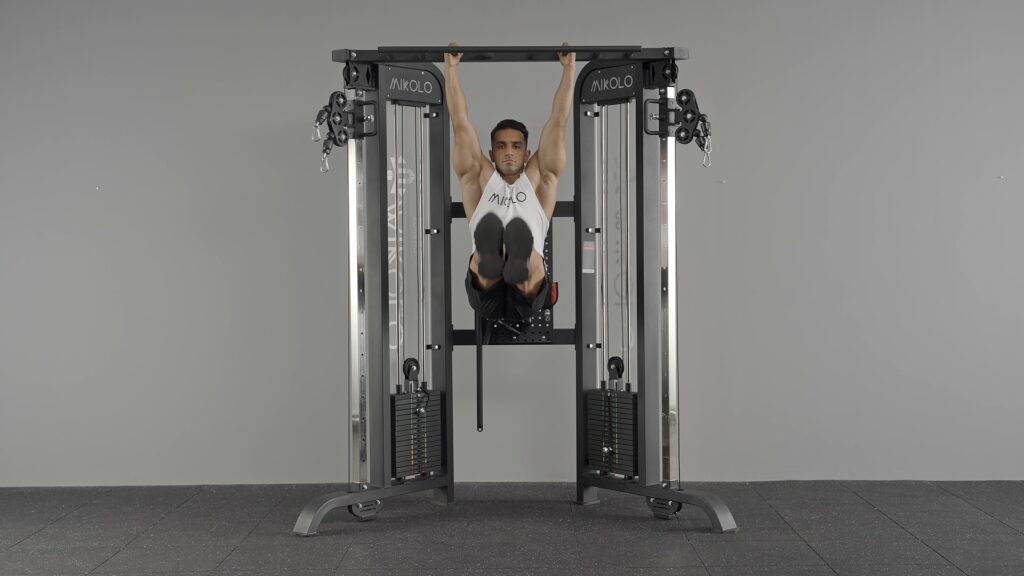Cable machines have become a staple in gyms around the world, and for good reason. These versatile pieces of equipment offer an incredible range of exercises that target nearly every muscle group, making them essential for anyone serious about strength training or overall fitness. Whether you’re a beginner or an experienced lifter, understanding the benefits, types, and best practices for using a Mikolo cable machine can elevate your workout routine to the next level.
What is a Cable Machine?
A cable machine, often referred to as a cable crossover machine, consists of a sturdy frame with adjustable pulleys and cables. The machine allows users to perform a wide variety of exercises by attaching different handles or bars to the cables, which can be moved in multiple directions. This flexibility enables workouts that mimic natural movements, making cable machines ideal for functional training.

Benefits of Using a Cable Machine
- Versatility: One of the most significant advantages of a cable machine is its versatility. You can perform an array of exercises targeting various muscle groups, such as chest, back, shoulders, arms, and legs. This makes it a one-stop solution for full-body workouts.
- Customizable Resistance: Cable machines allow for incremental adjustments in resistance, making them suitable for users of all fitness levels. Whether you’re rehabilitating an injury or building muscle mass, the machine can be tailored to your specific needs.
- Improved Range of Motion: Unlike fixed-path machines, cable machines allow for a free range of motion. This means you can perform exercises that are closer to natural human movement, reducing the risk of injury and improving functional strength.
- Core Stabilization: Because cable machines require you to stabilize your body as you perform exercises, they inherently engage your core muscles. This added benefit helps improve balance and stability, crucial for overall athletic performance.
- Space-Efficient: For those with home gyms, cable machines offer a compact solution without sacrificing exercise variety. Many models are designed to fit in smaller spaces, making them ideal for home use.
Types of Cable Machines
- Single Stack Cable Machines: These machines feature a single weight stack with one or two pulleys. They are more compact and typically less expensive, making them ideal for home gyms or smaller fitness spaces.
- Dual Stack Cable Machines: Offering two weight stacks, these machines allow for independent movement on each side. This setup is excellent for performing bilateral exercises, such as chest flyes or cable crossovers.
- Functional Trainers: These machines often come with multiple attachment points and adjustable pulleys, providing an even greater range of motion. Functional trainers are popular for performing sport-specific movements and complex exercises like woodchoppers or cable rotations.
- Cable Crossover Machines: Designed with wide frames and two adjustable pulleys on either side, these machines are perfect for exercises that require a wide range of motion, such as cable crossovers or high-pulley face pulls.
Essential Cable Machine Exercises
- Cable Chest Fly: Targets the chest muscles and helps in building a well-defined chest. Adjust the pulleys to shoulder height, grab the handles, and bring your hands together in front of your chest, squeezing the pectorals.
- Cable Row: A fantastic exercise for the back muscles. Sit or stand while pulling the cable towards your torso, focusing on squeezing the shoulder blades together.
- Tricep Pushdown: Effective for isolating the triceps. Attach a straight bar to the high pulley and push down, extending the elbows fully.
- Cable Bicep Curl: Targets the biceps by attaching a bar to the low pulley and curling it upwards while keeping the elbows stationary.
- Cable Squat to Press: A full-body exercise that targets the lower body and shoulders. Hold the cable handles at shoulder height, perform a squat, and then press the handles overhead as you stand.
Tips for Using a Cable Machine
- Start with Proper Form: Ensure you understand the correct form for each exercise to prevent injury. If you’re unsure, seek guidance from a fitness professional.
- Adjust the Machine Properly: Always adjust the pulleys and weight stack to suit your height and strength level. Improper adjustments can lead to ineffective workouts and potential injury.
- Gradually Increase Resistance: Begin with a weight that allows you to complete the exercise with proper form. Gradually increase the resistance as you become more comfortable with the movements.
- Incorporate Variety: To keep your workouts engaging and effective, incorporate a variety of exercises that target different muscle groups. This not only helps in building balanced strength but also prevents workout plateaus.
- Stay Consistent: Like any fitness routine, consistency is key. Incorporate cable machine exercises into your regular workout schedule to see significant improvements in strength and muscle definition.
Conclusion
Cable machines are an indispensable tool for anyone looking to enhance their strength training routine. Their versatility, customizable resistance, and ability to mimic natural movements make them suitable for all fitness levels. By understanding the different types of cable machines and incorporating a variety of exercises, you can achieve a well-rounded, effective workout that targets every major muscle group. Whether you’re working out at home or in a gym, a cable machine can help you reach your fitness goals more efficiently and effectively.




